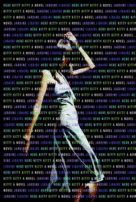
|
Index Homepage Book Reviews Reading Sections Children's Books Comics Fantasy General Fiction Lifestyle Mystery Nonfiction Romance Science Fiction |
Dream Pieces (May, 2004)
by Jardine Libaire, author of Here Kitty Kitty  Last night I dreamed I was searching racks of second-hand lingerie. One piece
was watermelon-pink with scalloped edges. Another was a white lace bodysuit.
Then a friend came into the room wearing a skirt with tiny toys sewn into the
valleys of the pleats. I took a canoe to my destination, and when I lifted the
paddle, drops made a delicate sound as they rejoined the water.
There was no
narrative to the dream, really, than this series of objects.
Last night I dreamed I was searching racks of second-hand lingerie. One piece
was watermelon-pink with scalloped edges. Another was a white lace bodysuit.
Then a friend came into the room wearing a skirt with tiny toys sewn into the
valleys of the pleats. I took a canoe to my destination, and when I lifted the
paddle, drops made a delicate sound as they rejoined the water.
There was no
narrative to the dream, really, than this series of objects.
I wish I could remember who said the following because it made such an impression. In an interview, a man pointed out that Native Americans treated the objects of the world as contemplatively as objects in a dream. For example, a dead bird on a real roadside would warrant as much of a spiritual inquiry as a dead bird on a dream roadside. A tree was not inactive or “un-alive”, but rather purposeful and willful. The interview, I believe, was with a conservationist. His point was that as a society we should endow the non-human world with more power and autonomy than we do. In the context of art, instead of ecology, the same point is very interesting to me.
Which is a lesson I've never forgotten. If I want to describe a Brooklyn avenue, I try to forget everything I know or believe about the place, and look for objects almost as if I was surveying the landscape of a dream. Things stand out—like a plastic bag floating across an empty basketball court, or a white garage door creamy as an oil painting—with the power and resonance of things from a dream. Unexplained and uninterpreted, they glow with meaning, like the white lace bodysuit or the dripping paddle. I love to read haiku because objects perform in them the same way. Simple articles, like azaleas or codfish or knives or mountains, conjure universes—but the haiku leaves the universe packed inside the words. I often think I’ve finished a piece of writing when it matches the rawness or brutality of the original flash of inspiration. (This, however, is far from a prescription. I get sick of my own style, and most of my favorite authors write stuff that is different from mine in every way it can be.) A mosaic of these images and moments can give an account of the world the way a pointillist painting does: tiny dots of light and dark give the impression of an unbroken whole. This exercise of dismantling and recreating a neighborhood, a soul, a crisis, a night sky, a bedroom—almost anything—brings me closer to the world. Understanding the world is often too ambitious; being part of it is realistic and maybe even more fulfilling. Copyright © 2004 by Jardine Libaire. Posted with permission of the publisher. |
Copyright © 1997-2019 by Writers Write, Inc. All Rights Reserved.
www.readersread.com
